Hanbok // The Complete Guide to the Traditional Korean Clothing
Everything You Need to Know About Hanbok
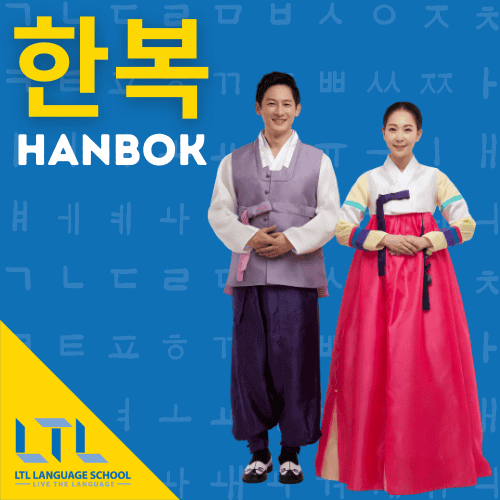
Today we’re going to introduce you to something that epitomises Korean culture, the Hanbok!
With Korean trends in fashion taking over the world, it wouldn’t be surprising to know that Koreans have always thought it very important to wear aesthetically pleasing clothing.
Korean traditional clothing, or Hanbok 한복 – is very pleasing to the eyes and also very comfortable to wear.
Unlike traditional attire from other cultures, Hanbok has almost not changed its form for over 1500 years.
Although Hanbok is a traditional attire, it has not lost its importance.
Nowadays Koreans wear modern western-style clothing while leading their everyday lives, but often think it’s more appropriate to dress in a Hanbok during special occasions like national holidays, big celebrations or traditional events.
Hanbok | Main Characteristics
Hanbok | Status of Hanbok
Hanbok | Accessories
Hanbok | Is it Popular Today?
Hanbok | FAQs
Hanbok Characteristics
Hanbok’s most important characteristic is its graceful shape, vibrant colours and a sense of harmony. Its expressive design is the most visible when its wearer is moving.
If you’ve seen the traditional Korean fan dance Buchaechum, you will definitely know what I mean.
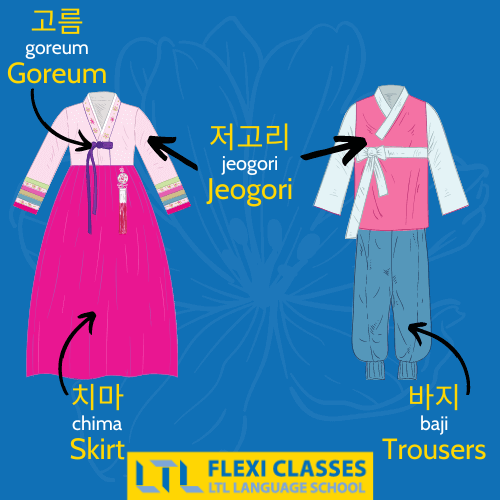
Let’s go over the basic anatomy of hanbok.
Women’s dresses are usually slim at the top, widening at the bottom.
It consists of a 치마 (chima) (a skirt that’s wrapped tightly around a woman’s chest) and a 치마저고리 (jeogori) (a jacket to cover her shoulders).
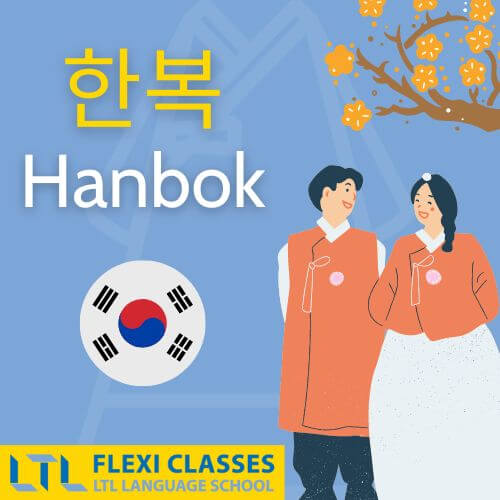
Jeogori is tied over one’s chest with two strings called 치마고름 (goreum).
Unlike women, Korean men wear a 치마 바지 (baji) under their jeogoris.
Even today, baji can be translated as trousers in Korean. The baji was not tightly fit around one’s body, since it should have had enough space for the owner to comfortably sit on the floor.
To protect themselves from the cold Koreans wore an overcoat or 표 (po) over their hanboks. Po was tied in the middle with a belt or a ribbon.
Just around a hundred years ago hanbok was an everyday attire.
But today it is worn as a ceremonial dress during formal or special occasions, such as children’s birthday parties, weddings, funerals and other celebrations.
Therefore most Koreans keep a celebratory hanbok in their house just in case.
Hanbok is taken out annually for 설날 (seollal) Korean New Year, and 추석 (chuseok), Korean Thanksgiving.
Also, a child is always put in a baby’s hanbok for its first birthday celebration called 돌잔치 (doljanchi).
Status of a Hanbok
A hanbok’s colour was chosen with the help of feng shui, an oriental philosophy of harmony. But the chosen colours also represented the wearer’s social status, age as well as marital status.
For example young girls and boys wore brighter colours, hanbok’s colour dulled as a person aged.
Of course, the upper classes wore dresses made from expensive materials such as silk or ramie, while commoners were restricted to wearing cotton.
In addition, colourful hanboks were almost exclusively reserved for upper classes, while commoners usually wore white (this is why Koreans were often called ‘white people’).
Commoners sometimes afforded to wear paler colours in cases of some celebrations.
Even though today everyone can wear a hanbok they like, back in the time certain types of the attire could only be worn by holders of specific titles.
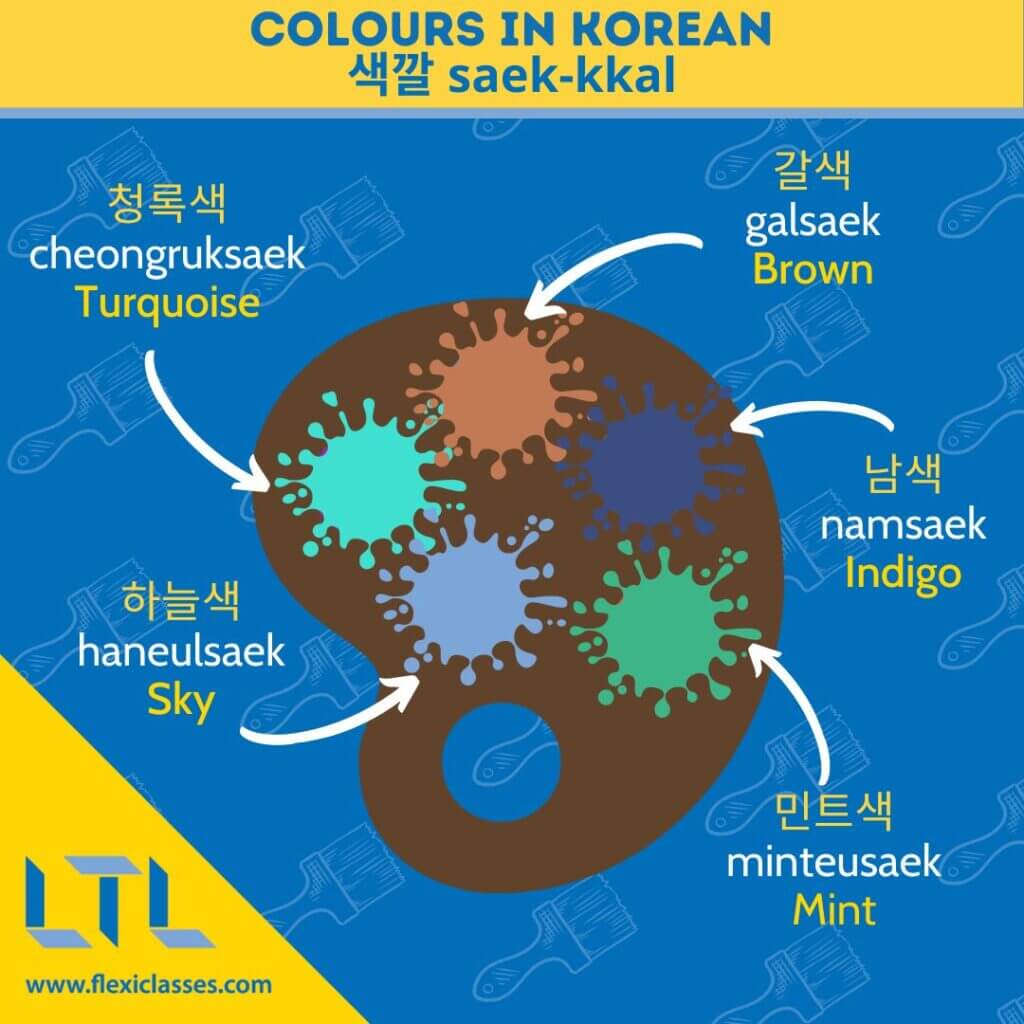
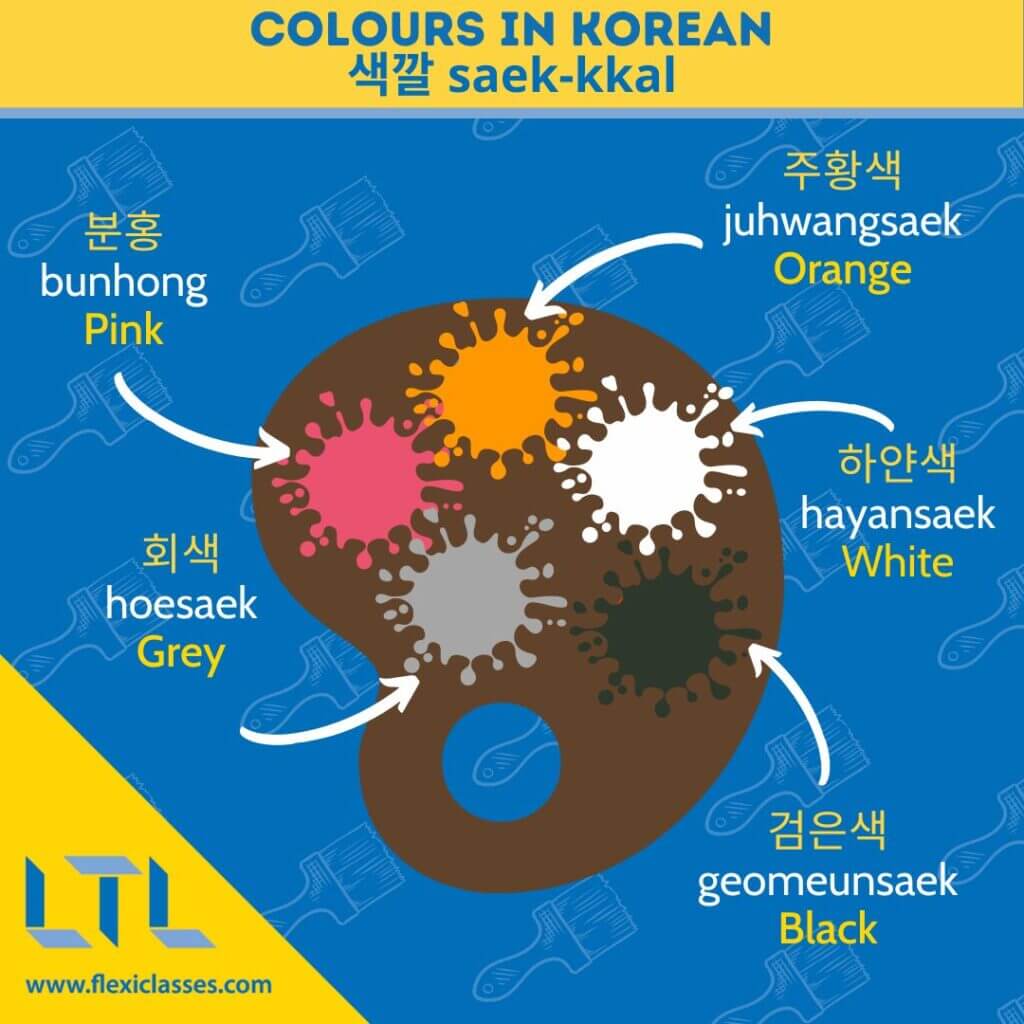
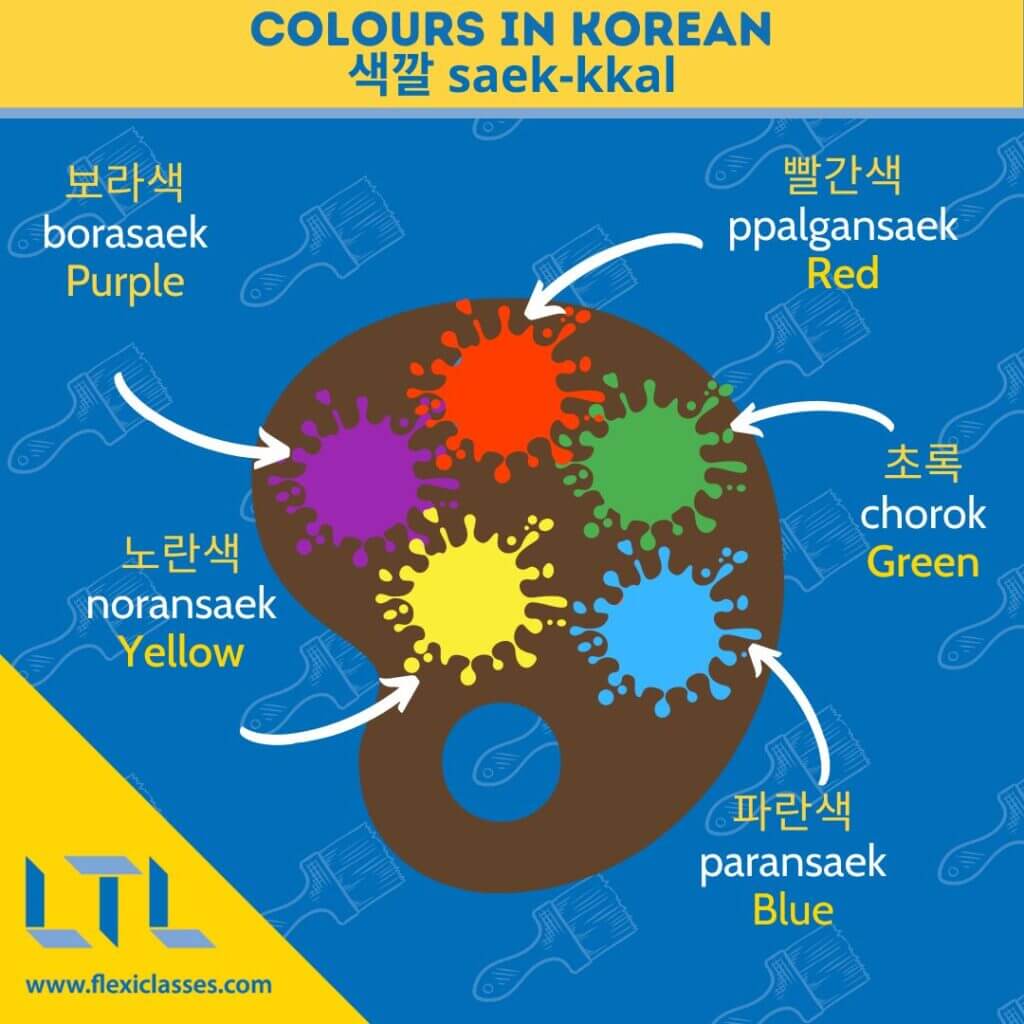
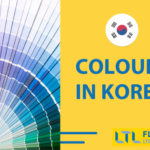
Colours in Korean | To the Rainbow and Beyond 🌈
Basic colours in Korean are studied early on, but how about ‘rainbow’, ‘sky’ and ‘indigo’? We teach you 19 colours in Korean and finish with a quiz.
The 9 symbols that show the power of the King
A king would wear a 면복 (myeonbok) during religious and formal ceremonies. Myeonbok included a headpiece with rows of beads hung, that prevented the king from seeing and being seen.
Nine symbols of power decorated the myeonbok, such as a dragon (symbol of strength and balance), pheasant (symbol of magnificence), tiger (symbol of courage), monkey (symbol of wisdom) and so on.
It is interesting that nine symbols were reserved for a king, while an emperor (of China in this case) could wear twelve symbols on his attire.
So when king Gojong of Joseon declared Korea an empire, he also started wearing twelve symbols of power on his hanbok.
Even though usual hanboks were simple in style, royal women (especially princesses) of Goryeo and Joseon wore 활옷 (hwarots) for special occasions such as weddings.
The chima was usually coloured bright scarlet and its delicate embroideries of symbols of power, wealth and honour showed the wearer’s high status.


Accessories
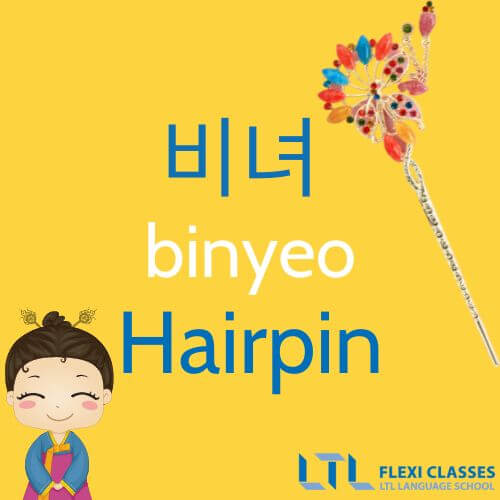
Hanbok was decorated with many accessories to achieve harmony and a high sense of aesthetics.
The most popular of these accessories is undoubtedly the 비녀 (binyeo).
It’s an ornamental hairpin that pinned a woman’s long hair (or a chignon) in place.
In the Joseon dynasty, girls proved to be coming of age and becoming women by pinning their hair up with a binyeo (sometimes it was considered a proof of marriage).
A binyeo is a long ‘stick’ with an ornament on one end.
You could read the status of a woman by the shape and size of binyeo’s ornament. Royal women usually wore dragons or phoenixes on the ends of their binyeos while others chose different shapes of flowers.
For men the most popular form of decoration (and also a symbol of their status) was a 갓 (gat) – a traditional hat usually made from bamboo.
Before the 19th century, only noble Koreans wore gat around their topknots.
Also men of different statuses wore different coloured gat.
For example military officers wore red, white gat was worn during mourning, while the most popular black gat was only worn by men who had passed the national civil service exams.
Are They Popular Today?
The hanbok may have been pushed aside by Western clothing in everyday use, but its beautiful shape, history and meaning have not been forgotten.
Modern Korean designers often use the hanbok as their inspiration for their creations.
This attire is gaining people’s attention as more and more celebrities wear traditional clothing.
When popular actor Sandra Oh was nominated for the Emmy’s, for her role in Killing Eve, her mother accompanied her to the Emmy Awards in a full traditional Hanbok attire.

During the Winter Olympic Games in Pyeongchang, a popular Korean idol Kai from the group EXO, showed the world a beautiful dance performance.
In this performance, modernity was mixed with tradition, wearing a mesmerizing blue hanbok.
A modernized version of hanbok has become more and more popular lately.
Moreover, famous Korean artists such as Blackpink showed their fans modern looks inspired by traditional forms of hanbok.
Safe to say, this beautiful tradition won’t be lost through generations!
FAQ’s
What is a Hanbok?
Hanbok is the traditional Korean attire characterized by vibrant colors, flowing lines, and elegant designs. It’s typically worn during special occasions like holidays, weddings, and cultural events.
When is a Hanbok worn?
Hanbok is commonly worn during celebrations such as Seollal (Lunar New Year), Chuseok (Korean Thanksgiving), weddings, and other important family or cultural gatherings.
How to write ‘Hanbok’ in Korean?
Hanbok in Korean is written like this: 한복.
How to say ‘skirt’ in Korean?
‘Skirt’ is 치마 (chima) in Korean.
Can I rent or buy a hanbok as a tourist in Korea?
Yes! Many shops in Korea offer hanbok rentals, especially near cultural landmarks like Gyeongbokgung Palace, where visitors can wear hanbok and enjoy discounted entry fees. It’s a fantastic way to immerse yourself in Korean culture!
What is the name of the ornament that Korean women put in their bun?
It’s called 비녀 (binyeo).
It’s an ornamental hairpin that pinned a woman’s long hair (or a chignon) in place.
What are the 9 symbols that decorate the myenbok?
Nine symbols of power decorated the myeonbok, such as a dragon (symbol of strength and balance), pheasant (symbol of magnificence), tiger (symbol of courage), monkey (symbol of wisdom).
Where can I learn colours in Korean?
Check out our article if you want to learn all the colours in Korean.
There is also a short test to see if you have remembered them!
Want More From LTL?
FANCY LEARNING KOREAN? Check out our online Korean courses here.
We offer a 7-day free trial to all online students where you can study Korean 24/7.
Want to study Korean in Korea instead? Our Korean courses in Seoul can either be taken in small groups of no more than 5 students or individually for a more tailored experience.
We even offer incredible homestay experiences in Seoul too.
To top it all off, it certainly doesn’t end with Korean. Check out the other languages we teach 👇🏻









